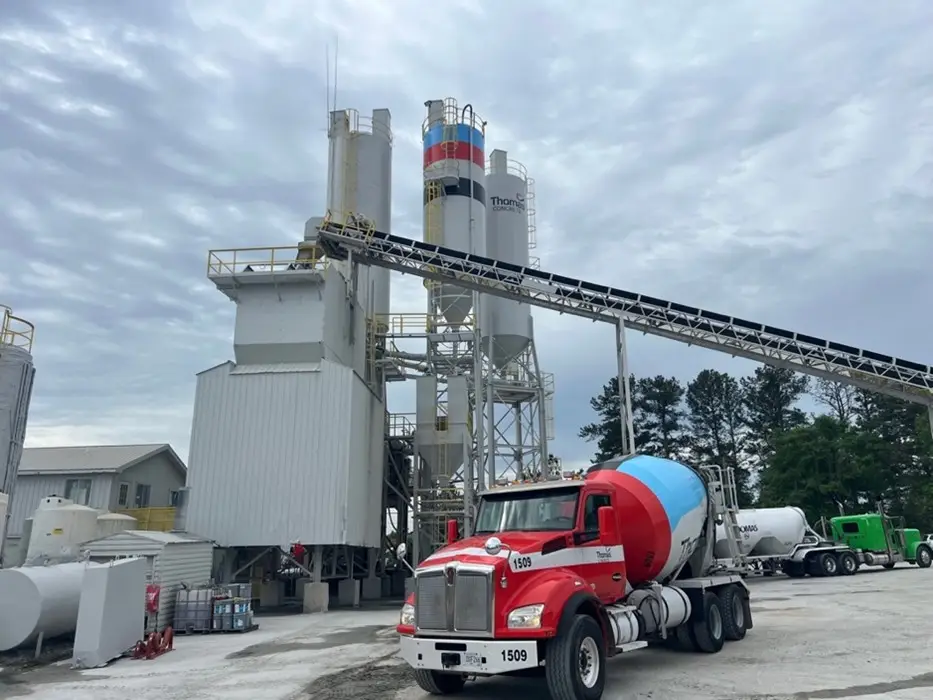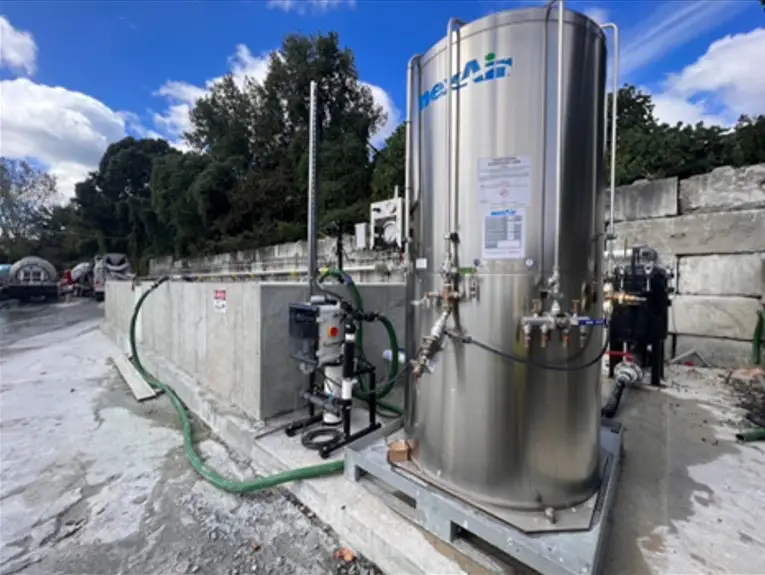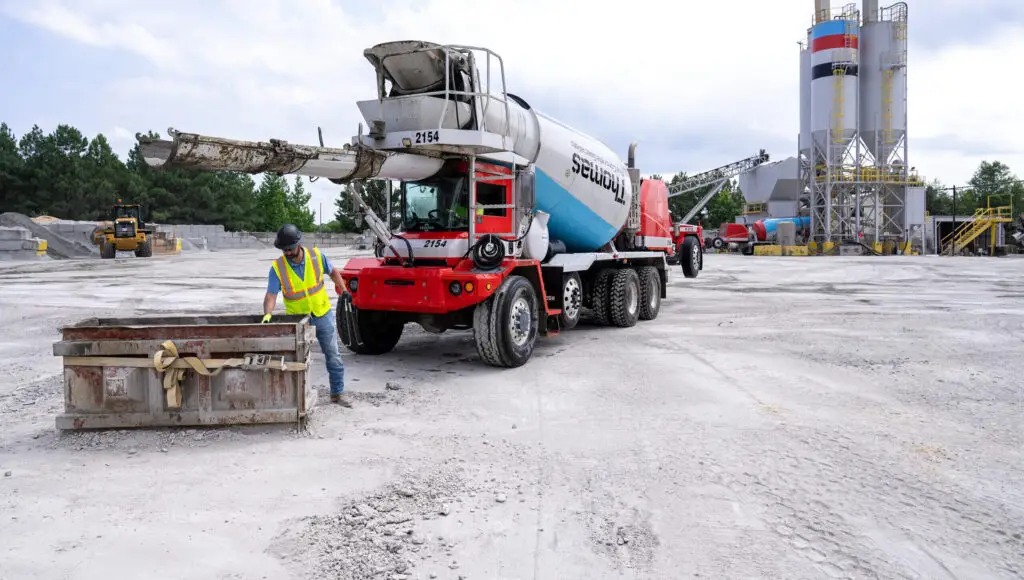Join us as we explore the detailed and proactive steps we take to not only meet but exceed environmental compliance, protecting our planet while delivering high-quality products.
Environmental stewardship through international standards
At Thomas Concrete, we demonstrate our commitment to environmental responsibility through rigorous adherence to international standards and proactive sustainable practices. We follow the guidelines of the ISO 14001:2015 Environmental Management System, which supports our strong dedication to environmental sustainability. A third party audits all of our facilities annually to ensure compliance with environmental standards and continuous improvement.
Air quality: managing emissions
In compliance with our air quality permits, we closely monitor and manage dust and particulate emissions from material handling, production activities, and vehicle traffic. Our facilities employ dust suppression systems and regularly water unpaved areas to limit dust emissions. We utilize advanced emission control technologies, such as baghouse and dust control systems, regularly to ensure effective pollutant reduction and adherence to air quality standards.

Water management: recycling for sustainability
Water is a critical resource in concrete production, and Thomas Concrete prioritizes its conservation through innovative reuse practices. More than half of the water used in our operations is recycled, including water from mixer truck washing. By recycling water, we not only minimize discharge volumes but also reduce the risk of contaminants reaching nearby waterways.
In facilities with limited water management capacity, we operate under wastewater discharge permits. Advanced treatment systems—like pH reduction using carbon dioxide and multi-step filtration—ensure process water meets or exceeds regulatory standards before being released safely back into the environment. These practices further our commitment to protecting vital water resources while supporting community health.

Protecting soil and groundwater
Our spill prevention protocols are designed to protect soil and groundwater from contamination. From designated storage areas to comprehensive spill response plans, we take a proactive approach to managing fuel, oil, and chemical containment. Continuous monitoring and employee training help us act quickly and effectively to safeguard the land around our facilities.
Sustainable waste management practices
Waste reduction is a cornerstone of our sustainability efforts. Unused concrete from job sites is repurposed into Thomabloc, large concrete blocks used in various construction applications. This program diverted over 20,000 cubic yards of concrete from landfills in 2023, creating both environmental and economic value. Additionally, other leftover materials can be crushed and reused as base fill, further reducing waste and supporting sustainable construction practices.

Looking ahead
Environmental stewardship is a journey, and Thomas Concrete is always seeking new ways to lead. From expanding our wastewater permitting to piloting advanced monitoring technologies, we remain committed to continuous improvement. These efforts reflect our belief that sustainable practices not only protect the environment but also benefit the communities we call home.
Join us in building a greener future
Environmental responsibility requires continuous effort and collaboration. At Thomas Concrete, we’re committed to raising the bar in sustainable practices and compliance. If you’re interested in learning more about our environmental initiatives or exploring potential collaborations, we invite you to connect with us today.
